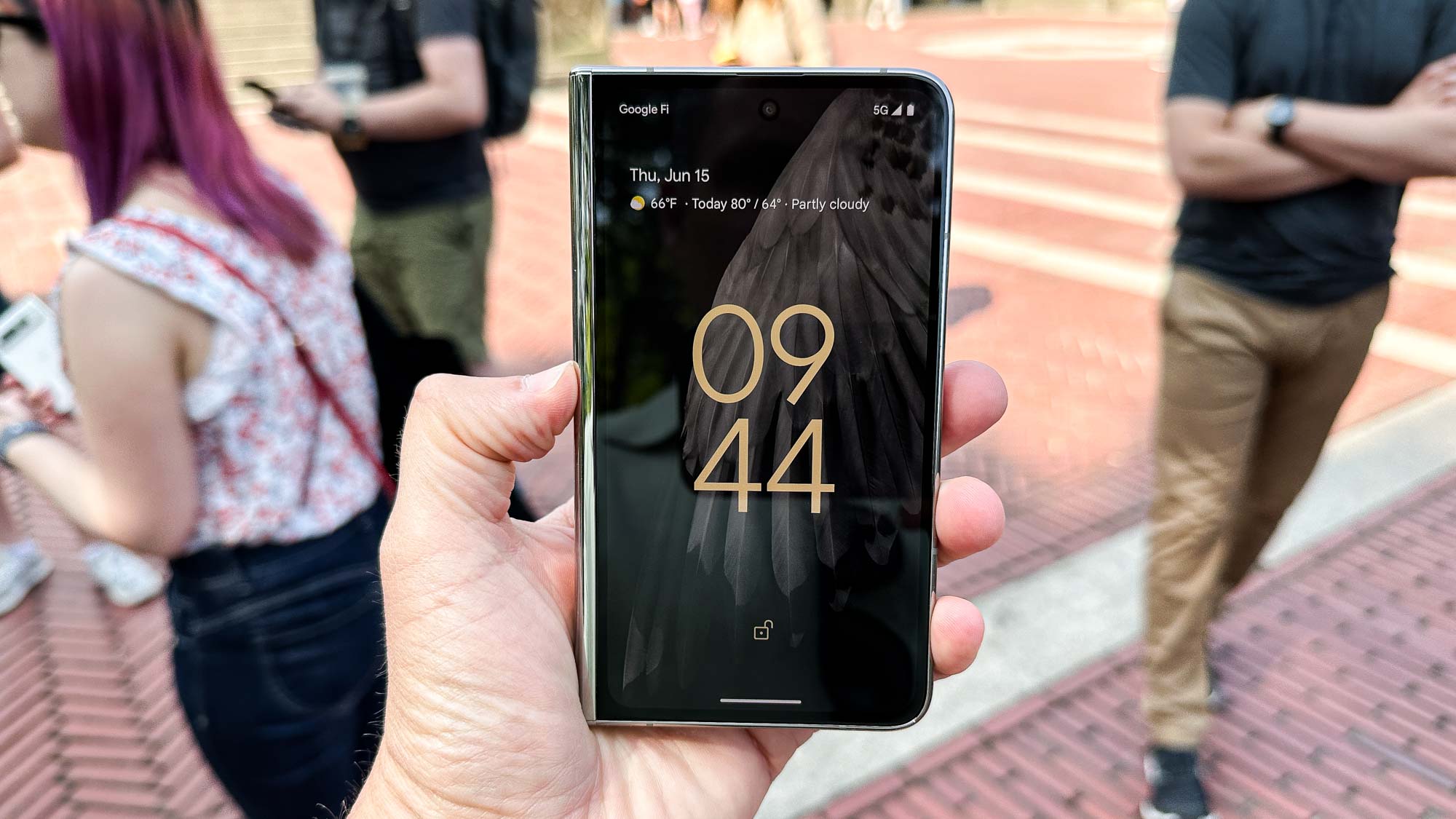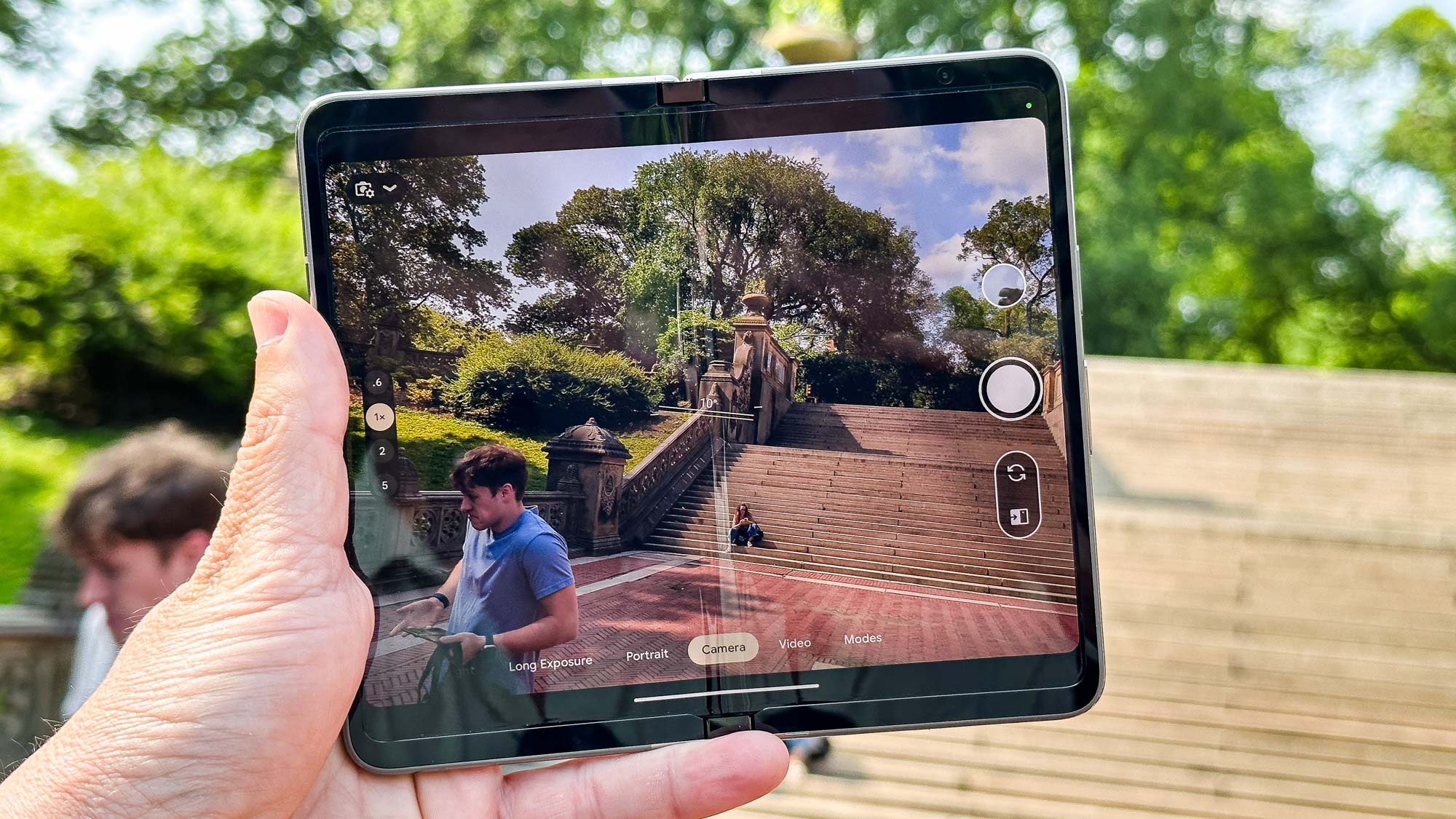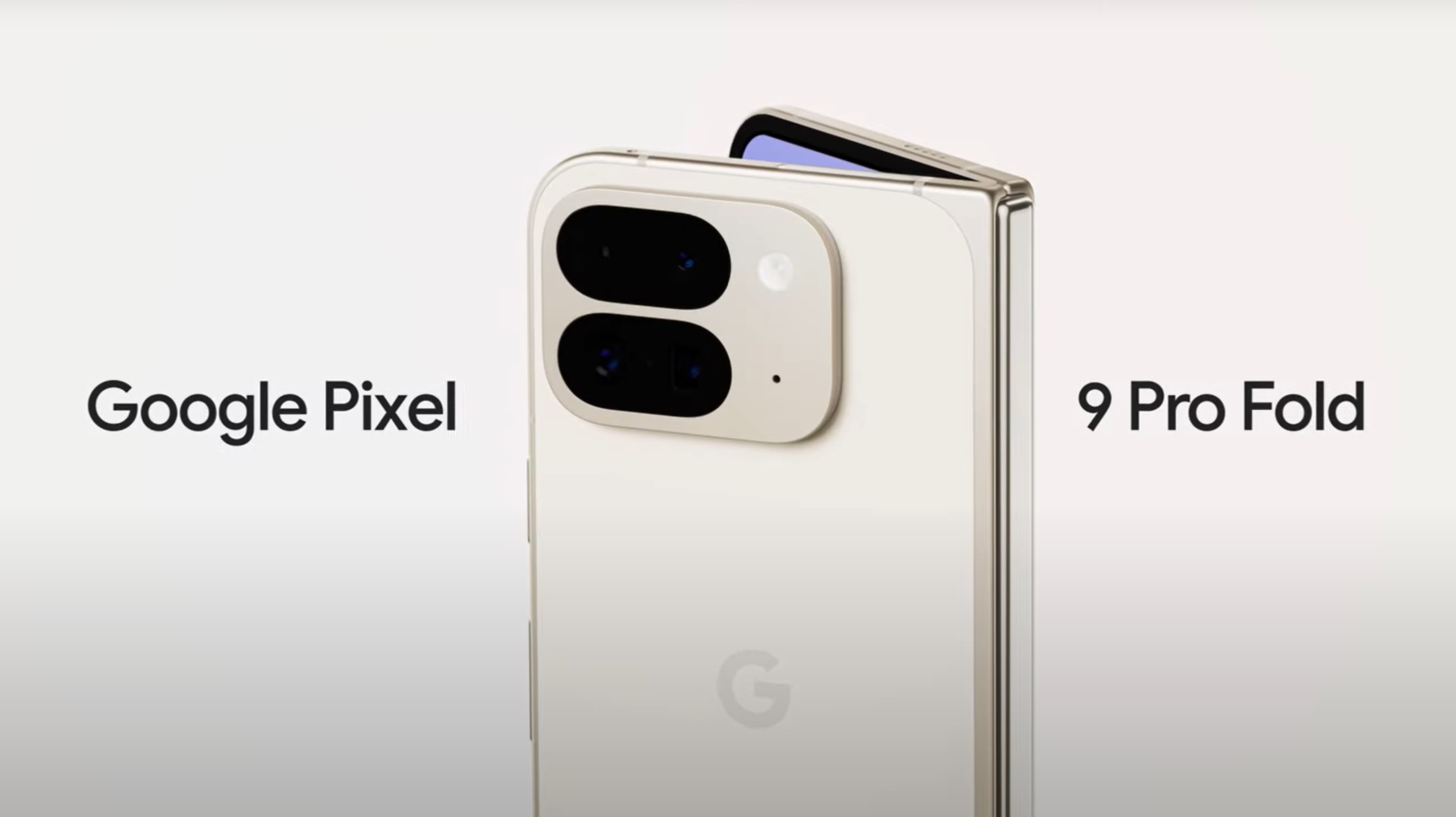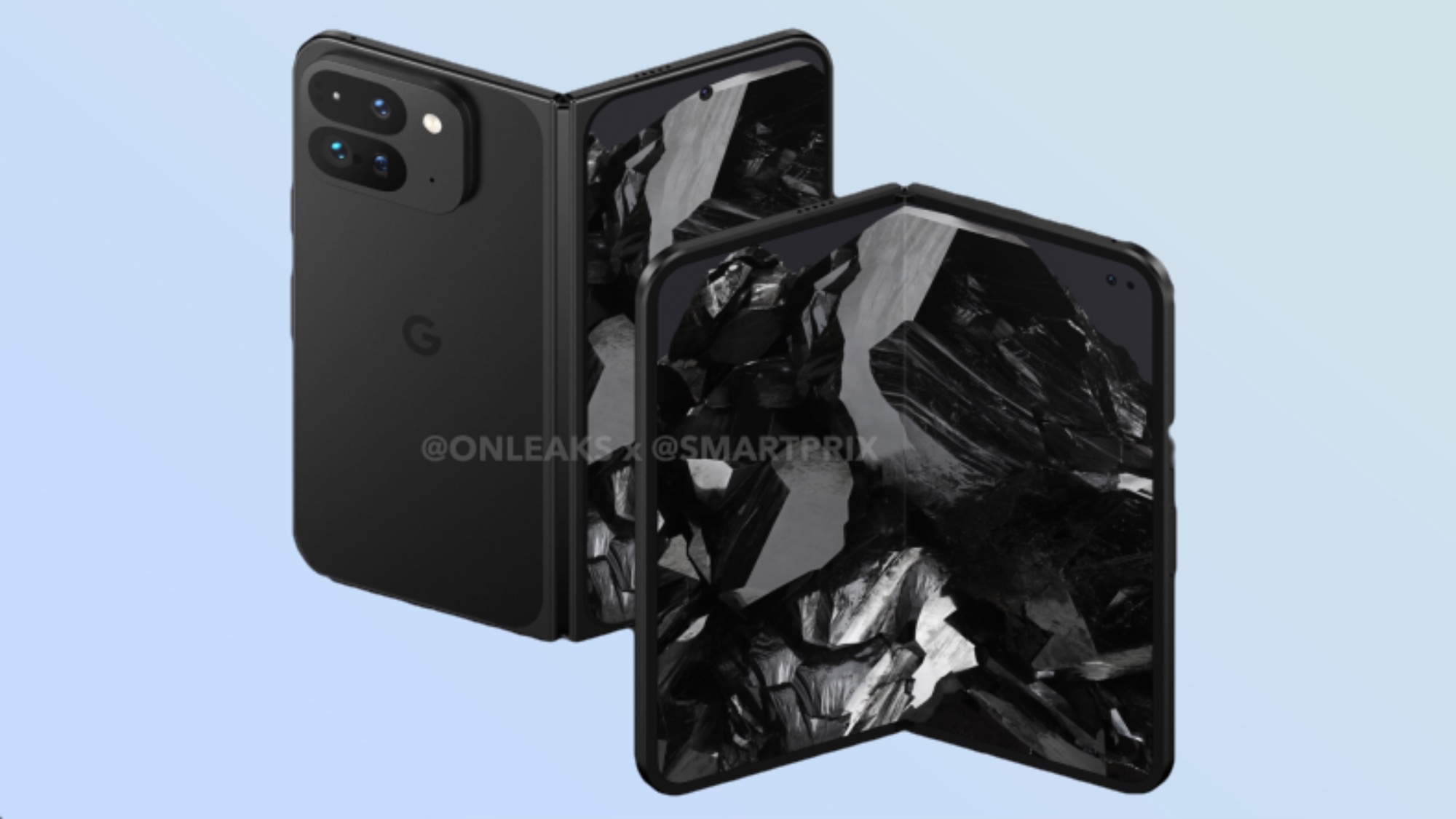The Pixel 9 Pro Fold is on the way — here's what Google needs to learn from the Galaxy Z Fold 6
4 things Google should do with its foldable, and 1 thing it definitely shouldn't

Samsung took the wraps off its new Galaxy Z Fold 6 foldable device this month, with the phone landing in stores in a little less than a week on July 24. Hopefully, Google has been paying attention during the whole launch process because there's a lot of lessons in there for how the company should be handling the next version of its foldable phone.
That would be the follow-up to the Pixel Fold, which will apparently be folded — sorry — into the Pixel 9 lineup and rebranded as the Pixel 9 Pro Fold. Google has scheduled a Made by Google hardware event for August 13, and we will see the new foldable revealed there.
Any changes Google plans to make with the Pixel 9 Pro Fold are likely set in stone by this point. Still, the Galaxy Z Fold 6 release has a few Dos — and one super-huge Don't — that I hope Google follows with its foldable Pixel.
Add some AI features that are foldable-specific

There's no question the Pixel 9 Pro Fold will have AI features. That's kind of the Pixel lineup's calling card, along with providing outstanding mobile photography. And by launching the new foldable as part of the Pixel 9 lineup, that means the Pixel 9 Pro Fold will likely have a Tensor G4 chipset that enables a bunch of new AI-powered capabilities.
Here's hoping some of those capabilities recognize that the Pixel 9 Pro Fold has multiple screens and can fold in half. Because several Galaxy AI features introduced with the Galaxy Z Fold 6 certainly do.
Interpreter mode isn't necessarily a new Galaxy AI feature, but Samsung did tweak it for both the Galaxy Z Fold 6 and the Galaxy Z Flip 6 to take advantage of the phones' interior and exterior displays. Now, when you have a conversation with another person speaking a different language, each person can see the real-time transcript appear on their respective display.
Sketch to Image takes advantage of the Galaxy Z Fold 6's S Pen support and extended drawing space, turning sketches that you create into more elaborate illustrations with the help of generative AI. Google Gemini can pop up on the phone's cover display, answering your questions without requiring you to open up your Z Fold 6.
Will the Pixel 9 Pro Fold deliver something similar? It's hard to say at this point, as rumored AI features for the Pixel 9 phones such as Add Me for improving group photos and the ability to search screenshots would work just as well on a conventional phone was they would on a foldable one. Pixel 9 Pro phones could come with a year of free access to Google Gemini Advanced, and the Fold would presumably be included in that offer. But again, that's not something that necessarily specific to a foldable phone design.
Here's hoping the Made by Google event sheds a little bit more light on Google's AI plans, particularly as they relate to the Pixel 9 Pro Fold.
Improve the battery life

Battery life on the original Pixel Fold was OK — it last 10 hours and 21 minutes on our battery test, where we have phones surf the web over cellular until they run out of power. The Pixel Fold time was a marginal improvement over the average smartphone's result, which isn't bad when you consider that the Fold has to keep a massive 7.6-inch screen powered up.
Samsung's Galaxy Fold phones have a similar issue, though the Z Fold 6 made slight progress in this area. The new phone turned in an average result of 10 hours and 35 minutes. That's only a slight improvement over what the Galaxy Z Fold 5 was able to do, though the extra battery life came without any increase in battery size.
That same challenge now applies to Google and the Pixel 9 Pro Fold — improve upon the original Pixel Fold's battery life by any means necessary. Maybe that means a larger battery than before. Maybe it mans the Tensor G4 is more power efficient than its predecessor. But however Google pulls it off, it's critical to wring more battery life out of its new foldable.
Address your display issues

Probably the biggest complaint surrounding past Galaxy Z Fold models involved the phone's exterior display — specifically, its narrow aspect ratio. The slender screen screen proved difficult to type on, particularly compared to devices like, well, the Pixel Fold, which offered a wider cover display.
Samsung tackled that problem with the Galaxy Z Fold 6, increasing the size of the cover display from 6.2 inches to 6.3 inches. The result is a slightly wider display that's a bit easier to work on than before. Our Z Fold 6 review certainly found the screen less claustrophobic.
There's nothing wrong with the Pixel Fold's cover display, but that doesn't mean there aren't other areas that need attention. I'm thinking about the bezels surrounding the inner display on the original Pixel Fold, which are simply too chunky for a phone that's supposed to sport a modern look.

We don't know how well Google will fix this issues until we get a hands-on look at the Pixel 9 Pro Fold, but early indications are promising. The above image is taken from a video teaser Google itself posted ahead of the launch event. And the bezels definitely look narrower.
Make it lighter

Samsung seems to keep trying to make it easier to tote around its super-sized foldable. With the Galaxy Z Fold 5 last year, Samsung adopted a Flex hinge that made the foldable sleeker than its predecessor; that switch also helped the Z Fold 5 shed 0.3 ounces. The weight loss continued with the Galaxy Z Fold 6 this year, as the new phone weighs half an ounce less than the Z Fold 5.
If any phone needs to go on an aggressive weight loss program, it's the Pixel Fold. That device tips the scales at 10 ounces — 1.5 ounces more than the Galaxy Z Fold 6 weighs. I don't know if Google has any plans to tweak the Fold design to slim things down a bit, but making a foldable that's easier to carry around would seem like it should be near the top of the to-do list.
Don't raise the price
And now, the one thing Samsung did that Google definitely should not do — charge more for its Pixel Fold successor. The Galaxy Z Fold 6 costs $100 more than its predecessor, with a starting price of $1,899.
Samsung probably has its reasons for boosting the price, though it really hasn't articulated them. "The Galaxy Z Fold 6 and Galaxy Z Flip 6 set a new standard of mobile innovation for us and is our best foldable series yet enhanced by new Galaxy AI capabilities," is what Drew Blackard, vice president of mobile product marketing at Samsung, told my colleague Mark Spoonauer when asked about the Galaxy foldable price hikes. The problem with that approach is it makes shoppers ask if those kinds of improvements really deserve an extra $100, and sometimes, the answer they come up with may not match Samsung's.
Google shouldn't take that risk, nor should it make the same mistake twice. When the Pixel Fold debuted a year ago, one of the things that immediately took the wind out of the new phone's sails was Google's decision to match the Galaxy Z Fold's starting price. By either holding the line on pricing this year — or even better, shaving a little off the Pixel Fold's $1,799 starting price — Google can draw more of a distinction between its new phone and the Galaxy Z Fold 6.
And in that way, Google could teach Samsung a thing or two about foldables.
More from Tom's Guide
Sign up to get the BEST of Tom's Guide direct to your inbox.
Get instant access to breaking news, the hottest reviews, great deals and helpful tips.
Philip Michaels is a Managing Editor at Tom's Guide. He's been covering personal technology since 1999 and was in the building when Steve Jobs showed off the iPhone for the first time. He's been evaluating smartphones since that first iPhone debuted in 2007, and he's been following phone carriers and smartphone plans since 2015. He has strong opinions about Apple, the Oakland Athletics, old movies and proper butchery techniques. Follow him at @PhilipMichaels.

